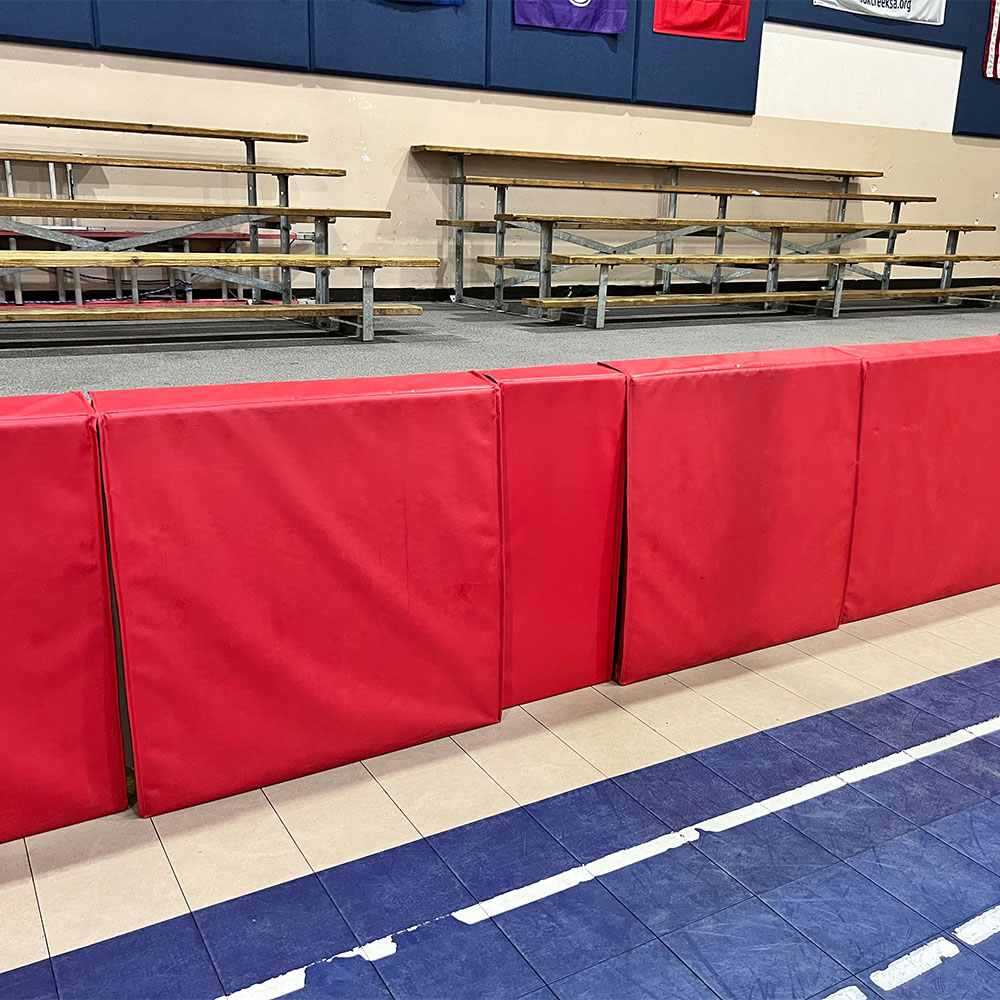How Thick Should Wall Padding Be for Sports?
Related Product: Wall Pad 2x6 ft 2 Inch ASTM Foam WB Lip TB
You can install thick wall padding in a variety of locations where sports practices and games are held, including in a school gym, a martial arts studio, an indoor home workout area, a wrestling practice area, or an outdoor football, soccer, or baseball field.
Just how thick should the wall padding be for different kinds of use cases? We can help you find just the right level of padding for multiple activities and use cases.
Wall Pad Thickness Options
Here are some of the use cases for the different thickness measurements for thick wall padding.Indoor Gyms - Padding that’s made to be hung on a gym wall, such as underneath a basketball backboard, normally is 2 inches in thickness, such as the Wall Pad ASTM Foam product. If the pad uses a support board in the back, it typically adds 1/2 to 3/4 inches to the thickness of the pad. In a gym that also contains a stage, Stage Pad products contain 2 inches of foam thickness as well.
Outdoor Fences - For an outdoor baseball, softball, soccer, or football field with a fence near the playing surface, the foam inside the wall pads usually measures 3 inches or 3-3/4 inches in thickness, although other thickness measurement options are available. These panels, such as the Outdoor Field Wall Padding product, have a wood backboard that adds 1/2 to 3/4 inches of thickness to the pad.
Post Padding - Cushioned foam padding is available for support posts of multiple shapes, including round, square, and I-beams. You may need support post padding in a wrestling workout room in the basement of a school. This foam padding, such as the Safety Pole Pads product, measures up to 4 inches in thickness. This level of cushioning protects an athlete who may crash into an unforgiving support post during an intense workout.
Workout Room Padding - For martial arts studios or workout rooms at schools, having padding on the walls is important for athlete safety. Facilities sometimes choose to install Foldable Gym Mats on the walls in these rooms. These mats provide protection with foam thickness measurements of 1.5 or 2 inches, which is plenty for a workout room, where athletes will not be running at top speed. They do not have backboards, but multiple panels are already connected together by the vinyl cover to simplify installation. These are not able to be customized, however, to accommodate windows, outlets, etc.
Wall Pad Materials and Sizes
Thick wall padding made for indoor use is available in a few different sizes of panels, typically in panels ranging from 5 to 7 feet in height and about 2 feet in width. For outdoors, you’ll often find padded panels measuring 4 by 8 feet in size. Custom sizes of panels are available with many different products.Wall padding will consist of a core of foam padding of polyethylene (PE) foam or polyurethane (PU) foam. This shock-absorbing foam compresses when placed under the stress of a collision and then rebounds to its original shape quickly.
To protect this PE or PU foam, which can be torn easily, our manufacturers wrap the foam pieces in a heavy-duty vinyl. The vinyl protects the foam, but it is also soft enough to compress with the foam during impact.
Some thick wall padding panels will have a plywood backing. This gives the panels enough stiffness to hang them easily, especially when using them on a chain-link fence or protecting a sheetrock wall.
Benefits of Wall Padding
Thick wall padding will absorb the impact of an athlete crashing into a hard surface, such as a wall. This type of crash could cause a serious injury without the use of a pad.The padding will distribute the force of the collision throughout the foam material. This lessens the level of the impact on the athlete, creating a safer area.
Without thick wall padding installed, even a minor bump from a concrete wall can cause a serious injury to athletes, especially if they bang their head, elbow, or knee into the unforgiving wall surface. This can cause concussions, breaks, bruises, and significant pain, which leaves the athletes unable to perform at their highest levels.
The panel of wall padding can be mounted to almost any hard surface that an athlete encounters on the practice or playing field, including:
- Walls around a gym floor
- Fronts of stages in a multi-use gym
- Entry doors for a gym
- Walls around an enclosed practice area
- Hard bleacher surfaces
- A support column, post, or I-beam in a practice area
- Fences around an outdoor field
- Goal posts on a football field
No matter what size or thickness of wall padding you need for your installation, we have it available. We also can work with you on orders for custom sizes of panels or for custom lettering and logo printing on the vinyl.












